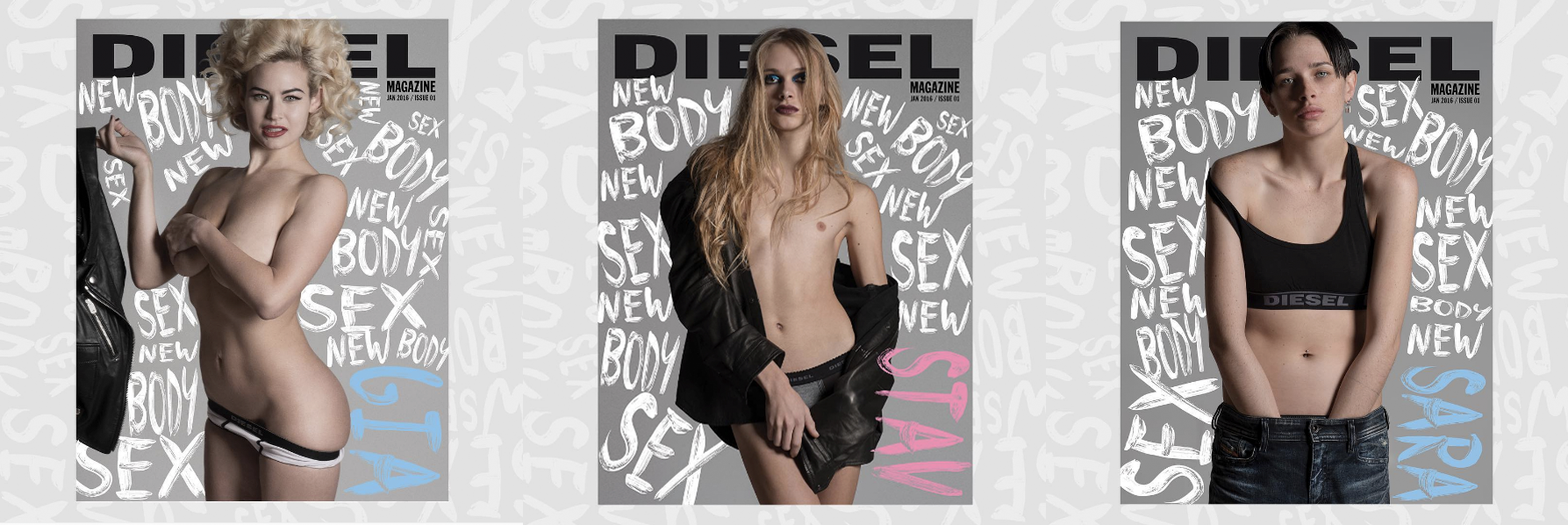Sex Communication and Fashion – Why Talk about Sex?
Brands, trendsetters and sex conversations
The Wikipedia definition of popularity is coupled with fashion, while the fashion is coupled with popularity :), yet it is not the absence of definition that is the case, but the idea that fashion industry cannot live without popularity while popularity begets imitation and fashion as a concept.
Fashion industry resembles a surfboard that comes to the crest of the popularity wave guided by the body of a trend-setter who knows where the wave shall come from and what kind of wave it shall be. Those at the top are new tendencies, new desires and new ideas originating in the world of end consumer. The brands that prefer to focus on the wave narrow peak rather than its wide base are particularly interested in complying with requests of the trend-setting cluster – the customers who ride the waves of new ideas, incite admiration and desire to copy their style, even if in clothes only. While a trendsetter in his turn concerns about the relevance of self-expression – the garments that convey his or her personal gender identity and sexuality.
In compliance with interests of the second mentioned the dialogue between brands and trendsetters also includes sexual conversations and questions about items needed for self-expression, and in case sexuality in clothing is essential for the end-user, the vendor’s task shall be to find out what sexual terminology is apprehensible for the customer, what is the way he identifies his sexuality and in what manner it is reflected in the clothes he or she wears. As for the trendsetter, this type of dialogue and cooperation helps promote his ideas into general public and extend respective influence.
As a consequence, sexual communication between the brand and the end user results in fashion-industry’s borrowing the language of trendsetters with further generation of such new terms as #bodypositive, #allsexuality, #newbody, #newsex, together with beauty standards and standards of gender identification’ expansion to the runway. Male models who identify themselves as female get the right of modelling at women’s fashion parades, with the same being admitted for men who identify their gender as female.
Diesel breaks the stereotypes
Diesel chose non-standard models to be the cover story of the magazine first issue in 2016 - the issue that the concept architects referred to as celebration of sexuality. The photo-session and the interview followed by #newbody and #newsex hashtags focused on gender identification conversations and the questions of sexual identity (“what do I identify as” and “what turns me on?”). The project featured three Diesel models whose sexual images fit neither beauty stereotypes nor traditional gender identification – GIA, STAV, SARA.
The curvaceous figure of Gia Genevieve alludes to Marilyn Monroe; Sara Cummings is a woman who identifies herself as man; Stav Strashko is a young man identifying himself as a girl. Another common thing shared by the issue cover persons is that they highlight their non-traditional nature in Instagram without trying to hide the “shortcomings” yet parading them and thereby following the precept of the great Diana Vreeland – “Make an asset of your faults. If you have a long nose, hold it up and make it your trademark”. Diana became the first of the fashion magazines’ editors-in-chief who looked up to the young people of sexual revolution and introduced the trend of placing sex and pictures of that time trendsetters – like Mick Jagger and The Beatles – within the covers of Vogue.
What’s on the model’s mind?
At the same time the project of Diesel debunks the myth about shallowness and thoughtlessness of fashion industry staffers. In terms of the interview all project participants prove themselves to be interesting characters who are no strangers to existential reflections and sophisticated ideas:
GIA: “I definitely think everyone can identify with both genders in some sort of way”.
STAV: “We have more opportunities to meet people that we would have without the existence of internet, social media and dating apps, I think they help those who are too shy and don’t have enough courage to approach someone in person “.
SARA: “People remember you by how you made them feel much more than what you said to them”.
The photo session styling done by Nicola Formichetti highlights the words of GIA: “wear what makes you feel good. Confidence looks better than any designer”. The position taken by Diesel shows that fashion-industry does not want to fall behind global trends concerning the freedom of sexual and gender identification, the right to the variety of kinks and fetishes. The “long tail” of individual tastes proceeds to leave even less room for those “normal” and “standard”, and those who are the first to notice this shall remain on the top of the wave.
… and give your all to update!
The instance of Diesel implies that unless one discontinues to use outdated beauty clichés being loath to extend the standards, meeting the demands of that part of the society that aims at individuality and freedom of choosing its sexual and gender role in quest of answers to “what do I identify as?” and “what makes me excited?” shall become impossible.
Diesel continues to raise the issue of gender self-identity. The video below is a show of apparel and accessories void of any expressed gender designation, and the color palette is used to highlight this:
By starting talking about sex with its customers, by learning their sexual preferences and by analyzing sexual terminology fashion ceases to dictate standards yet starts following the desires of the people.
More about sexual communication – in article “LET’S TALK ABOUT SEX – 5 REASONS TO HAVE SEXUAL COMMUNICATION”.
